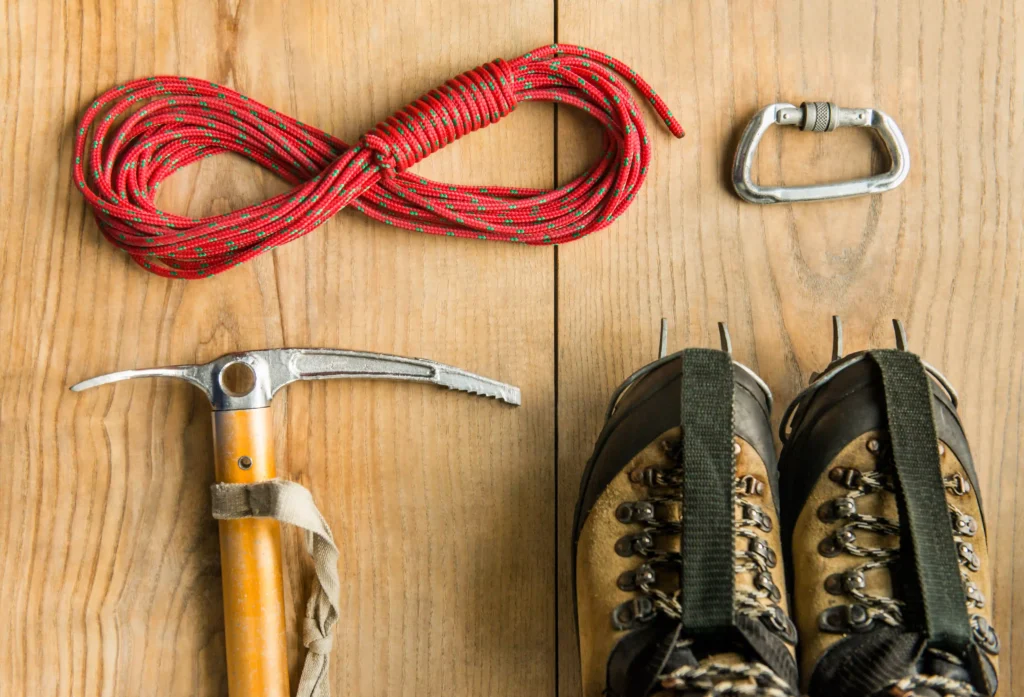Rock climbing is an exciting sport that mixes physical challenge with mental focus, but having the right gear is key to staying safe and successful. Whether you’re climbing indoor walls or tackling outdoor cliffs, knowing your essential climbing equipment makes all the difference. In this guide, we’ll chat about the top rock climbing gear for beginners need to kick off their climbing journey.
Table of Contents
Climbing Shoes That Fit Just Right
One of the most important pieces of rock climbing gear is a good pair of climbing shoes. These aren’t just any shoes; they’re specially crafted to give you the grip and support you need for both indoor and outdoor climbing. Here’s what you should think about:

- Fit: Climbing shoes should be snug but comfortable. They need to be tight enough to provide support without causing pain. Remember, they’ll stretch over time, especially if they’re made of leather.
- Type of Climbing: Different climbing activities need different shoes. For bouldering and gym climbing, you’ll want softer shoes for better sensitivity. On the flip side, stiffer shoes are perfect for long multi-pitch climbs, giving you more support over time.
- Materials: Climbing shoes typically come in leather or synthetic materials. Leather shoes are known for stretching and molding to your foot shape, while synthetic shoes hold their fit over time.
Harness and Safety Gear
Your harness is your lifeline—and just like your shoes, it needs to fit well. A harness connects you to the rope and anchors, keeping you safe as you climb.
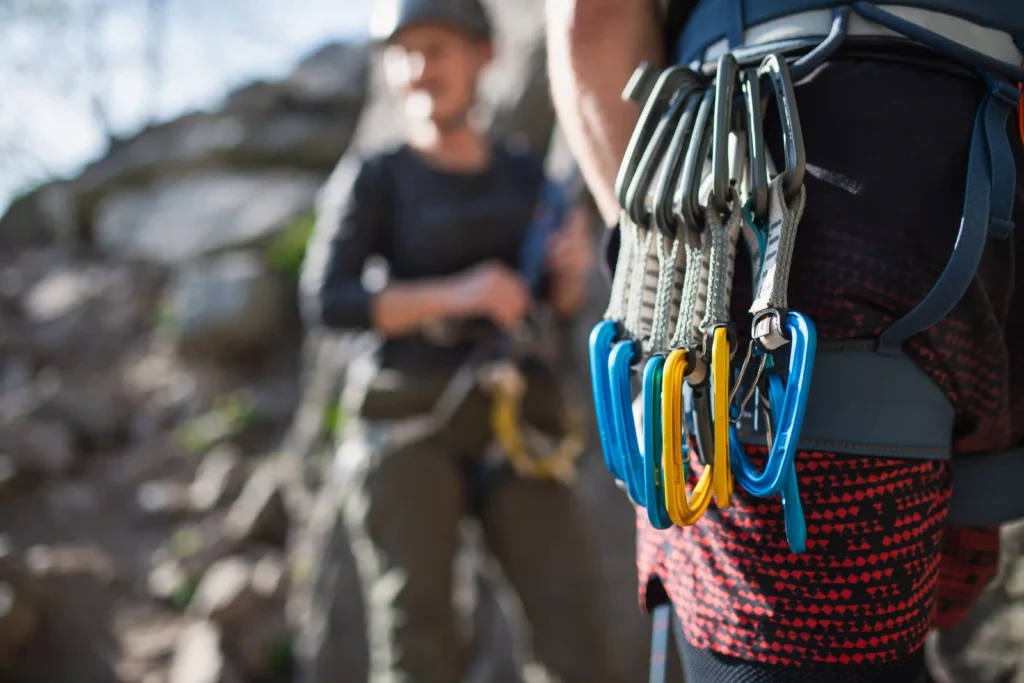
- Types of Harnesses: Beginners should look for a harness that offers comfort and adjustability. The most common type is the sit harness, which wraps around your waist and thighs. Look for one with padded leg loops and waist belts for added comfort during long climbs.
- Helmet: Protecting your head is crucial, especially when climbing outdoors where falling rocks are possible. Helmets should be lightweight yet durable, offering maximum protection without hindering your movement.
- Chalk Bag: Sweaty hands can ruin a climb, making a chalk bag an essential accessory. Chalk helps keep your hands dry and improves grip, crucial for maintaining control on the wall.
Ropes and Anchors
Ropes are, without a doubt, essential to climbing safely. Understanding the types of ropes and how to use them is vital:
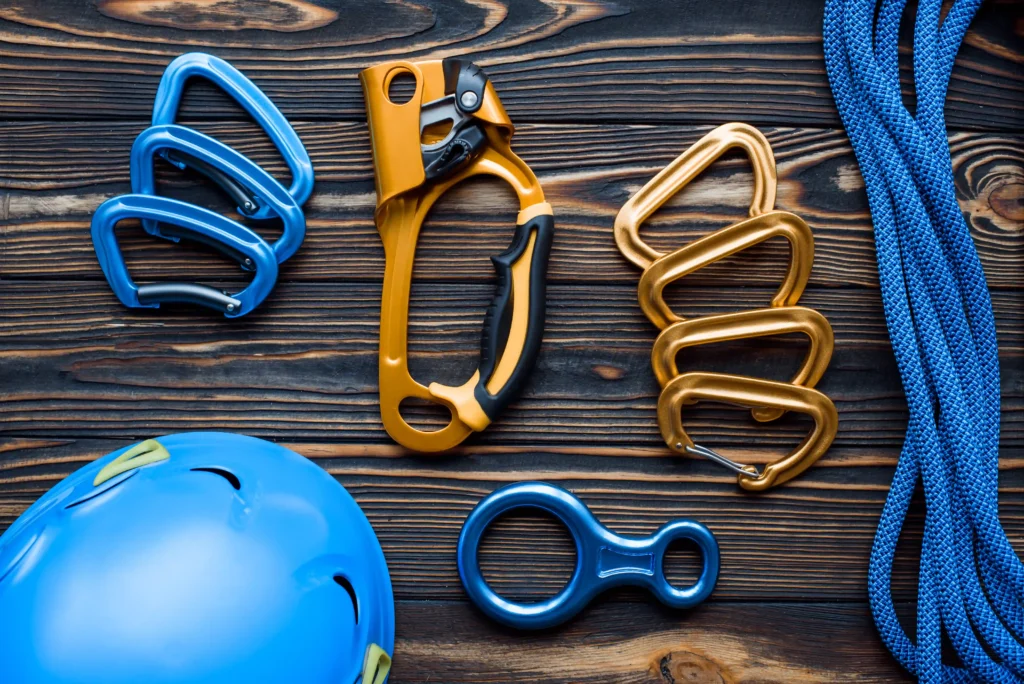
- Dynamic vs. Static Ropes: Dynamic ropes are designed to stretch under tension, making them ideal for lead climbing. Static ropes, on the other hand, have minimal stretch, making them better suited for rappelling and rescue scenarios.
- Choosing the Right Rope: Consider the type of climbing you’ll be doing. Indoor climbers may need shorter ropes, while outdoor climbers often require longer options to accommodate various routes.
- Anchors: Learning the basics of anchors is crucial for top rope climbing. Solid anchors provide the support needed to secure the rope, ensuring safety during descent or an unexpected fall.
Apparel for Climbing
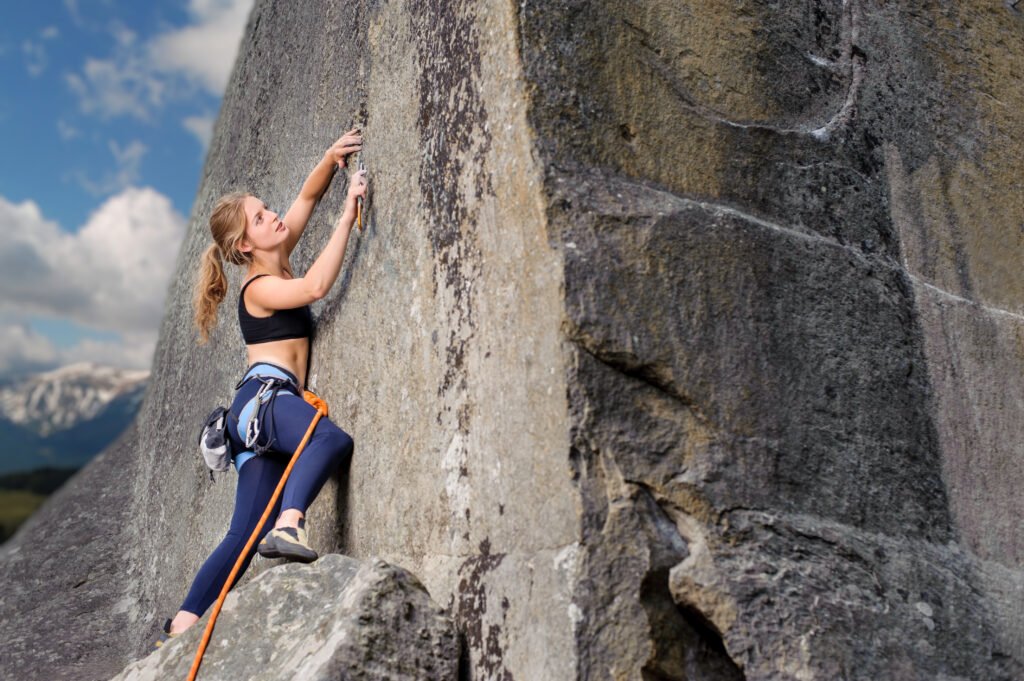
The right clothing can significantly impact your climbing experience. Proper climbing apparel provides comfort, flexibility, and durability:
- Comfort and Flexibility: Opt for clothing that allows a full range of motion. Stretchy fabrics are ideal as they won’t restrict your movements.
- Durability: Climbing can be rough on clothing, so choose items made from durable materials that can withstand abrasions and repeated use.
- Layering: If you’re climbing outdoors, layering is essential to adapt to changing weather conditions. Start with a moisture-wicking base layer, add an insulating layer, and finish with a weather-resistant outer layer.
Packing and Maintaining Your Gear
Once you’ve gathered your gear, knowing how to pack and maintain it is essential for prolonging its lifespan:
- Packing Tips: Use a sturdy gear bag to organize your equipment efficiently. Keep heavier items like shoes and harnesses at the bottom and lighter items like chalk and apparel on top for easy access.
- Regular Maintenance and Inspection: Regularly inspect your gear for signs of wear and tear. Check ropes for fraying, helmets for cracks, and harnesses for weakened stitching. Clean your gear according to manufacturers’ guidelines to ensure longevity.
Embark on Your Climbing Journey
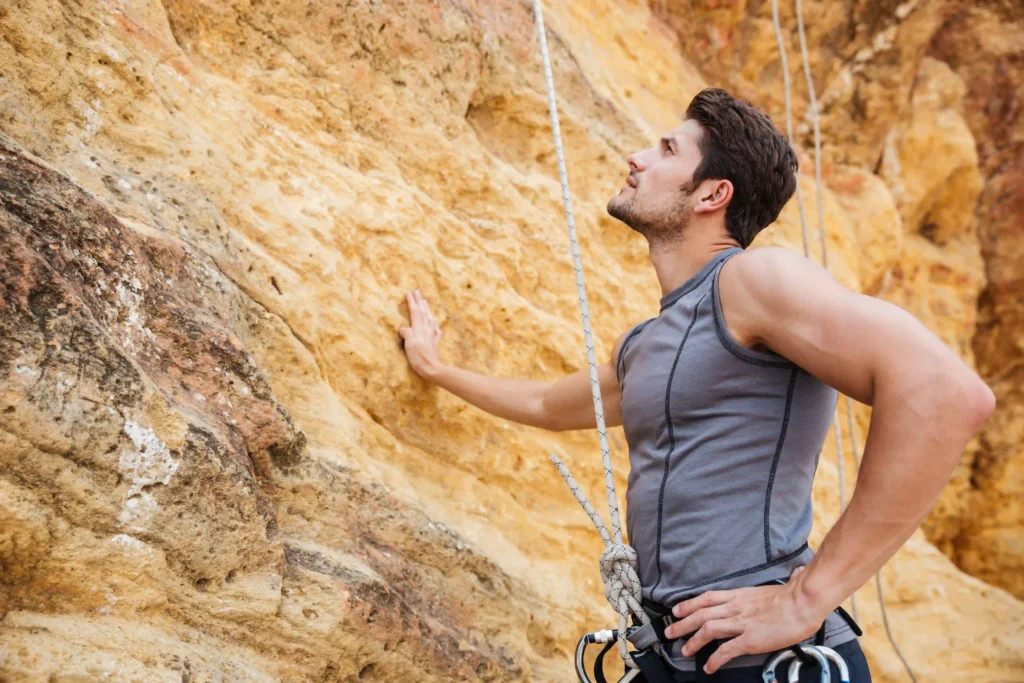
Armed with the right gear, you’re ready to tackle the walls with confidence. Remember, safety comes first, so invest in quality equipment and learn the proper techniques. If you’re feeling uncertain, consider joining a climbing class or hiring a guide to show you the ropes (literally!). With the right preparation and mindset, rock climbing can be an immensely rewarding pursuit.
Ready to take the next step? Explore our range of curated climbing gear and kickstart your climbing adventure today.
Frequently Asked Questions (FAQ)
What is the best way to start rock climbing as a beginner?
For beginners, it’s recommended to start climbing indoors at a climbing gym. This controlled environment allows you to learn the basics safely and with guidance from instructors. As you gain skills and confidence, you can transition to outdoor climbing.
How often should I replace my climbing gear?
The lifespan of climbing gear can vary depending on usage and maintenance. Generally, harnesses and ropes need replacing every 3-5 years, or sooner if you notice any wear or damage. Always follow the manufacturer’s guidelines and regularly inspect your gear for safety.
Do I need special clothes for climbing?
While not strictly necessary, wearing proper climbing apparel can enhance your experience significantly. Look for clothes that offer flexibility and durability, and consider layering if you’re climbing outdoors to adjust to varying weather conditions.
Can I use my climbing gear for all types of climbing?
Not all climbing gear is suited for every type of climbing. Different disciplines, like bouldering, sport climbing, and trad climbing, may require specific equipment. Ensure your gear matches your intended activity for optimal safety and performance.
What precautions should I take when climbing outdoors?
Outdoor climbing involves additional risks compared to indoor climbing. Always wear a helmet, be mindful of weather conditions, and thoroughly check your equipment and surroundings. It’s also wise to climb with experienced partners and ensure a clear communication path.
Should I join a climbing club or hire a professional guide?
For those new to outdoor climbing or unsure of their skills, joining a climbing club or hiring a professional guide can be beneficial. These resources provide not only safety guidance and technique improvement but also an opportunity to meet fellow climbing enthusiasts.
